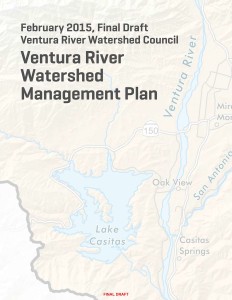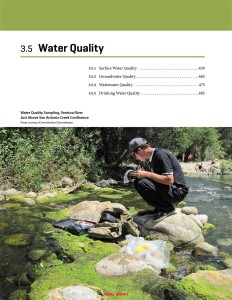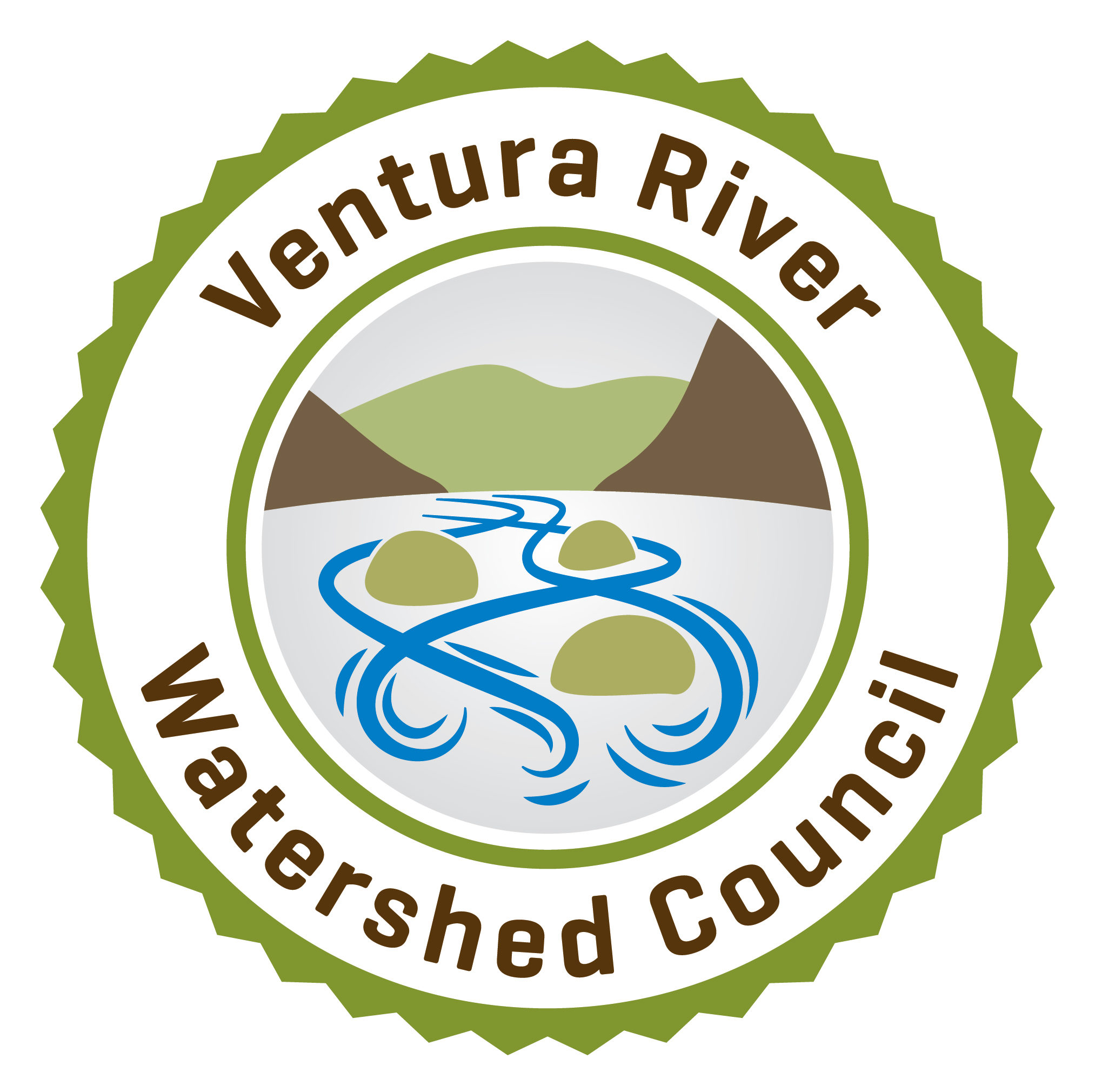Final Draft of Watershed Management Plan Posted.
Between September 2012 and February 2015, the Watershed Council and other stakeholders worked with staff to develop the Ventura River watershed’s first comprehensive management plan.
The final draft plan is scheduled for approval at the Council’s March 5, 2015 meeting.
 The plan’s Executive Summary and Parts 1 and 2 were provisionally approved by the Council on November 20, 2014. Now, with the completion of Parts 3 and 4, the entire plan is ready for final approval. The plan went through draft review section by section in MS Word format. The final version has been professionally laid out.
The plan’s Executive Summary and Parts 1 and 2 were provisionally approved by the Council on November 20, 2014. Now, with the completion of Parts 3 and 4, the entire plan is ready for final approval. The plan went through draft review section by section in MS Word format. The final version has been professionally laid out.
What’s New: Final layout drafts of Parts 1 and 2 and the Executive Summary have been in circulation for several months. The latest version of the Executive Summary has been slightly enhanced and reorganized. The cover, Table of Contents, and Acknowledgements are new.
Part 3—the Watershed Characterization, and Part 4—References and Supporting Materials, are the significant new pieces of the plan, and should be the focus of your review.
 Part 3 starts with an Overview and Quick Facts summary of the watershed’s physical features, followed by six more detailed characterization sections which describe and illustrate the watershed’s physical features, geology and climate, surface water and groundwater hydrology, flooding, water supplies and demands, water quality, habitat and species and related issues, opportunities for access to nature, and demographics and local regulations.
Part 3 starts with an Overview and Quick Facts summary of the watershed’s physical features, followed by six more detailed characterization sections which describe and illustrate the watershed’s physical features, geology and climate, surface water and groundwater hydrology, flooding, water supplies and demands, water quality, habitat and species and related issues, opportunities for access to nature, and demographics and local regulations.
Each section includes a list of the key documents on that topic where readers can find more detailed and technical information.
3-1 Overview and Quick Facts
3-2 Physical Features
3-3 Hydrology
3-4 Water Supplies and Demands
3-5 Water Quality
3-6 Ecosystems and Access to Nature
3-7 Land Use and Demographics
Part 4 – References and Supporting Materials—provides a key to the acronyms that appear in the plan, a glossary of technical and local terms, a listing of the source documents used to develop this plan, and a number of appendices that provide data and information that expand on information provided in the body of the plan.
A great number of people contributed to the development of the watershed management plan. This was truly a collaborative effort. Authentically grassroots. On behalf of the Watershed Council, the watershed, and all who care for it—thank you!
If you find errors or have minor edits to suggest to the final draft plan, please send them as soon as possible, and ideally no later thanMarch 2, 2015, to Lorraine Walter at lorraine@ovlc.org or 805/649-6852 x4. Please note: Unless it is to correct inaccuracies or omissions, funding is not available at this stage in the process to make significant changes to content.May 5 Watershed Council Meeting
The next meeting of the Ventura River Watershed Council will be on Thursday, March 5, from 9:00 am to 12:00 pm, in the Topping Room of the Foster Library, 651 E. Main Street.
As discussed above, consideration of approval of the final watershed management plan is a key agenda item.
Also on the agenda: a report summarizing Santa Barbara Channelkeeper’s data logger monitoring results for 2013 and 2014, including dissolved oxygen and water levels; an update on efforts to form a Groundwater Sustainability Agency for Upper Ventura River Basin; an overview from Casitas Municipal Water District of water supply status and urban water use reduction successes; consideration of a proposal to change the Watersheds Coalition of Ventura County’s steering committee structure by adding two seats for regional entities; and a discussion about project ideas for the upcoming round of Proposition 84 funding.
An agenda will be circulated next week.
Feb. 18 Horse and Livestock Watershed Alliance Meeting

The Horse and Livestock Watershed Alliance (HLWA) will meet on Wednesday, February 18, 2015, from 5:30 to 7:30 pm at the Help Of Ojai Little House Multipurpose Center, 111 W. Santa Ana Street, Ojai. The HLWA represents horse and livestock owners in the Ojai Valley. The group works with horse and livestock owners to improve manure management practices that affect water quality, and works with water quality regulators to help craft fair regulatory schemes that minimize economic impacts.
Agenda and more information.
Feb. 20 Community Presentation
Northern Ventura County Coastal Watershed Project
On February 20, 2015, an organization called Blue Tomorrow will be presenting the results of a project analyzing soil, stormwater, and base flow in five coastal watersheds that drain oilfield lands. These five watersheds are located just north of the Ventura River watershed.
The free presentation is scheduled from 3:00 – 4:00 pm and will be held at the Wright Event Center on the Ventura College campus, located at 57 Day Road in Ventura.
See flier for more information.
